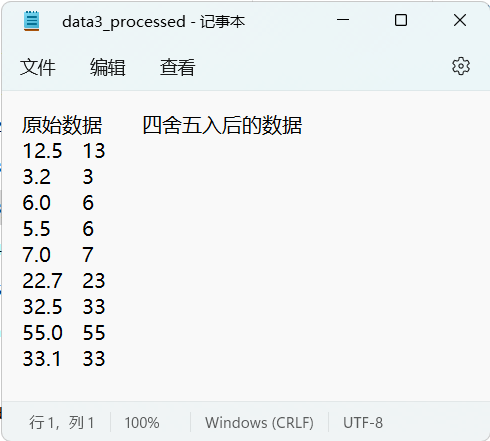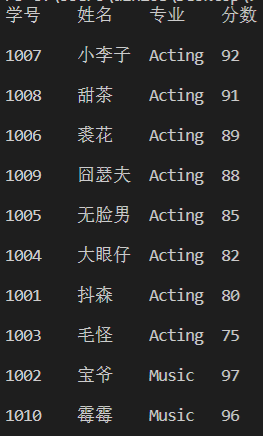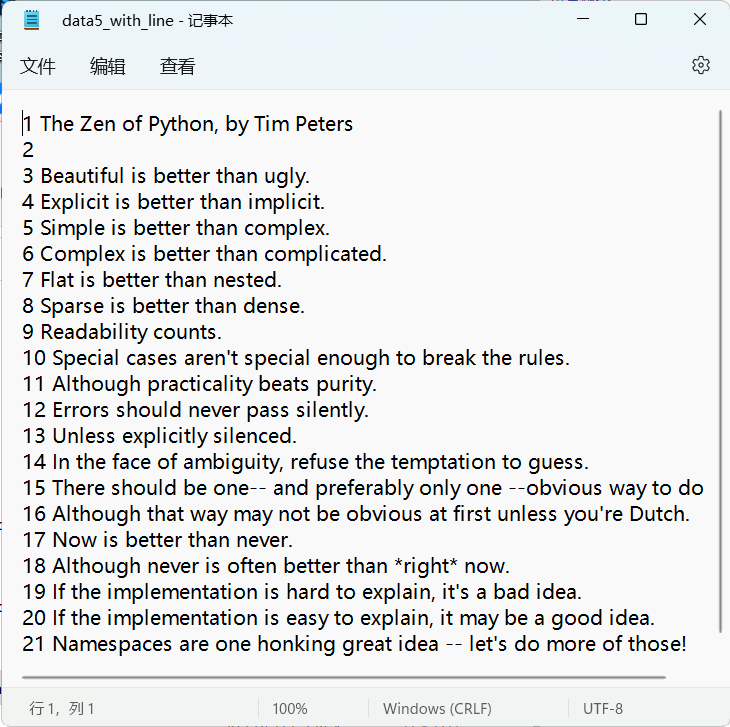实验五
任务三:
with open('data3.txt','r+', encoding='UTF-8') as f: Z=[] Y=[] x=[] for i in f: x.append(i.strip('\n')) newx=x[1:11] for i in newx: y=float(i) Y.append(y) if y-int(y) >= 0.5: y=int(y)+1 else: y=int(y) Z.append(y) print(f'原始数据\n{Y}') print(f'四舍五入后的数据\n{Z}') with open('data3_processed.txt','w',encoding='utf-8') as f: write1=['原始数据']+Y write2=['四舍五入后的数据']+Z for i in range (len(Y)): f.write(f'{write1[i]}\t{write2[i]}\n')


任务四:
with open('data4.txt', 'r', encoding = 'utf-8') as f: Y=[] l=[] t=[] e=[] data=f.readlines() for i in data: i=i.split() Y.append(i) Y.remove(Y[0]) newlist1=sorted(Y,key=(lambda x : x[2])) for i in range (0,8): l.append(newlist1[i]) l1=sorted(l,key=(lambda x : x[3]),reverse=True) for i in range (8,10): t.append(newlist1[i]) l2=sorted(t,key=(lambda x : x[3]),reverse=True) X=l1+l2 for i in X: i1='\t'.join(i) i1=i1+'\n' e.append(i1) e.insert(0,'学号\t姓名\t专业\t分数\n') for i in e: print(i) with open('data4_processed.txt','w',encoding='utf-8') as f: for i in e: f.write(i)


实验五:
with open('data5.txt', 'r+', encoding = 'utf-8') as f: data=f.read() print('行数',len(data.splitlines())) print('单词数',len(data.split())) s=0 for i in data: if i.isspace(): s=s+1 print('空格数',s) print('字符数',len(data)) with open('data5_with_line.txt', 'w+', encoding = 'utf-8') as f: for i in range(len(data.splitlines())): f.write(str(i+1)+' '+str(data.splitlines()[i])+'\n')





